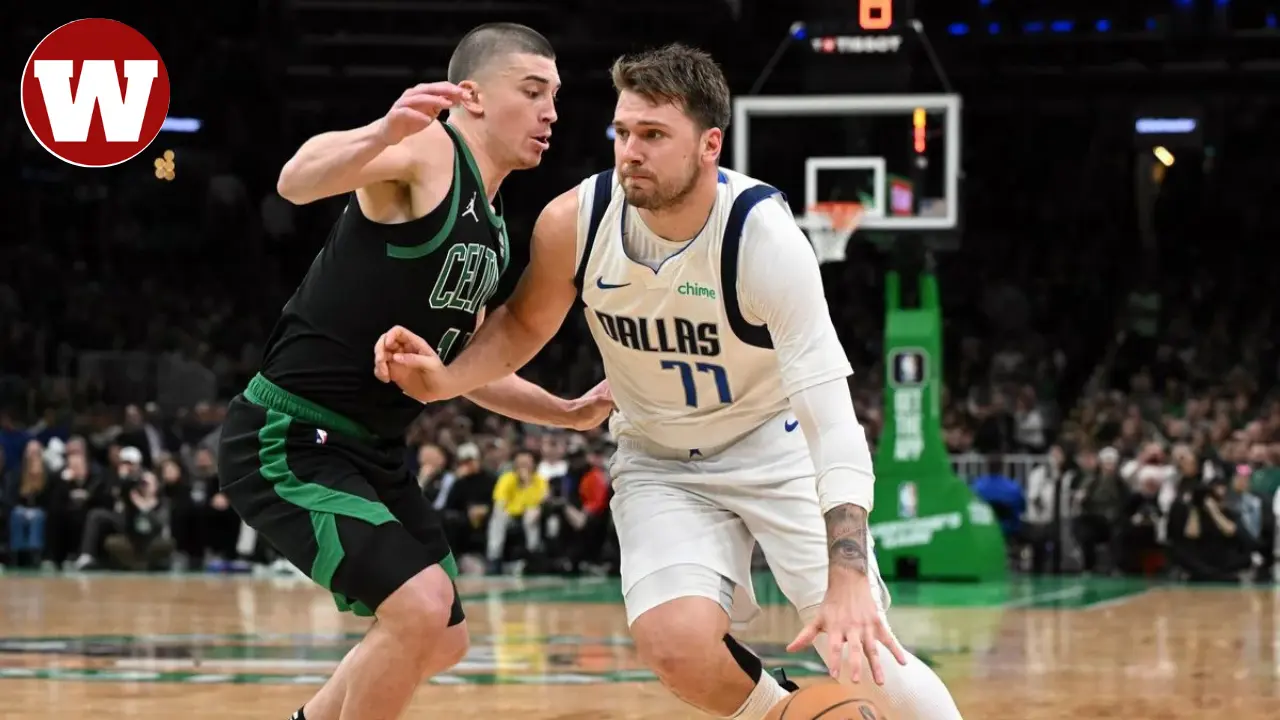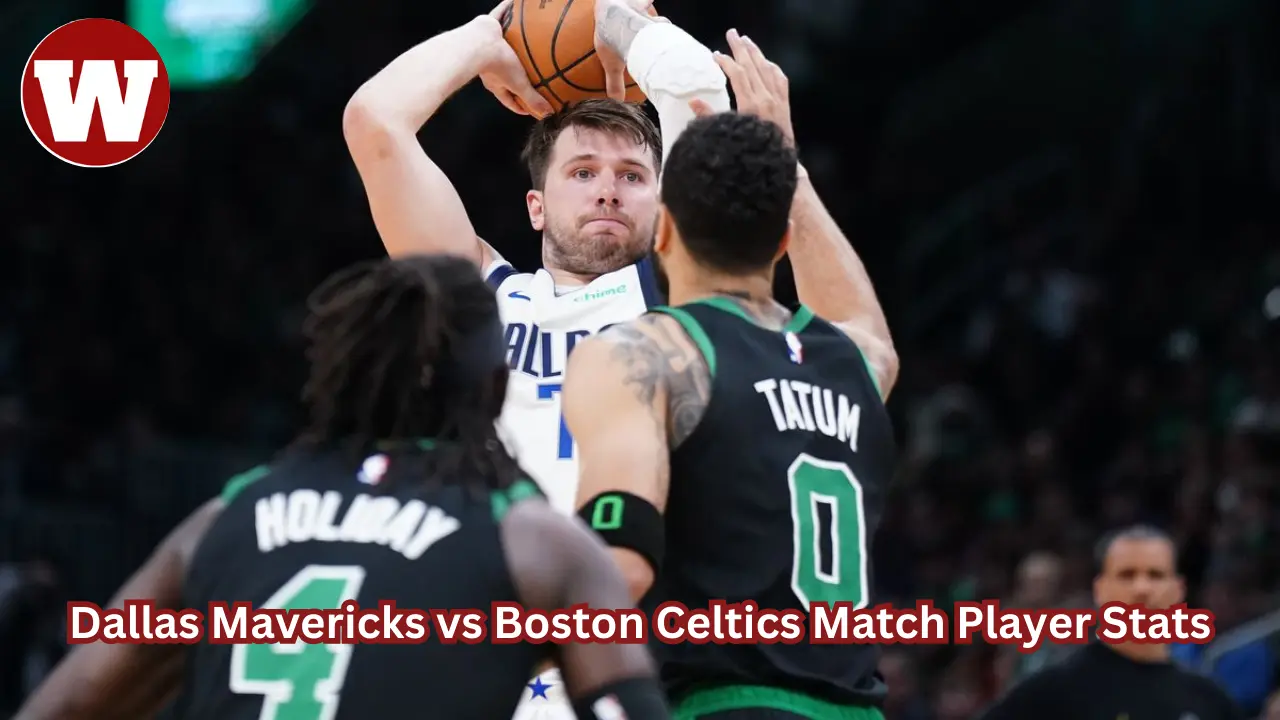The Dallas Mavericks and Boston Celtics rivalry is one of the NBA’s most dynamic matchups, bringing an exciting blend of skill, strategy, and athleticism to each face-off. Both teams bring a unique set of strengths to the court, creating thrilling moments and unforgettable highlights. By examining player stats, team dynamics, and individual contributions, we gain insight into how these matchups unfold and what makes each game a spectacle.
In this detailed breakdown, we will delve into quarter-by-quarter player stats, examine critical scoring moments, and explore how each team’s style of play impacts the outcome. Whether you’re a Mavericks fan or a Celtics supporter, understanding the details of each game adds depth to the viewing experience. Join us as we explore the Dallas Mavericks vs Boston Celtics match player stats, key plays, and notable performances that shape the narrative of each Mavericks-Celtics game.
Team Comparison Overview
Historical Performance Between Dallas Mavericks and Boston Celtics
The history of the Dallas Mavericks and Boston Celtics rivalry is marked by intense games and closely matched contests. The Celtics, one of the NBA’s most storied franchises, bring an established legacy and a disciplined style of play, grounded in strong defensive tactics. Their approach often emphasizes coordinated defensive moves and maximizing possession time. Conversely, the Mavericks, known for their fast-paced and versatile offensive strategies, keep their opponents on their toes with dynamic three-point shooting and quick offensive transitions.
In reviewing the historical data, we find key trends in performance that highlight each team’s evolution over the years. The Celtics consistently rank high in defensive metrics, often managing to limit opponents’ scoring opportunities with their organized plays. Meanwhile, the Mavericks tend to focus on scoring volume and shooting efficiency, a strategy that has allowed them to stay competitive.
Season Highlights and Key Metrics
This season has brought new developments and impressive highlights for both the Mavericks and Celtics. The Mavericks have capitalized on their perimeter shooting capabilities and increased their efficiency in fast breaks, leading to significant scoring surges in their games. Their strong offense, spearheaded by Luka Dončić, has made them one of the most formidable scoring teams in the league. On the other side, the Celtics have continued to excel defensively, particularly in their ability to block shots and reduce their opponent’s scoring opportunities.
Key Metrics of the Season:
- Dallas Mavericks: High three-point shooting percentage, strong fast-break performance, and above-average rebounding stats.
- Boston Celtics: Top ranks in defensive ratings, high steals and blocks per game, and consistent shot accuracy.
Key Players to Watch
Each game between these teams features standout players whose contributions often prove pivotal. Luka Dončić is undoubtedly a focal point for the Mavericks, known for his ability to score, assist, and control the game’s tempo. Dončić’s remarkable ball-handling skills and perimeter shooting make him a difficult player for defenders to contain. For the Celtics, Jayson Tatum’s defensive acumen and consistent scoring make him an invaluable asset. Tatum’s ability to control the paint, make accurate shots, and contribute defensively provides the Celtics with a well-rounded edge.
Key Player Highlights:
- Luka Dončić (Dallas Mavericks): Leading in points per game, impressive assists, and strong three-point percentage.
- Jayson Tatum (Boston Celtics): High defensive stats, significant contributions in rebounds, and reliable shot accuracy.
Quarter-by-Quarter Breakdown

First Quarter: Establishing Control
In the first quarter, both teams set the tone, with each side attempting to seize an early advantage. The Celtics typically initiate a high-energy defense in the opening minutes, focusing on limiting the Mavericks’ shooting opportunities. This approach forces the Mavericks to adapt, often pushing them to play faster and aim for three-point shots to break the Celtics’ defense. Observing first-quarter stats allows us to see which team manages to build momentum and control the pace early on.
Key First-Quarter Stats:
- Dallas Mavericks: Quick offensive start, averaging a high number of three-point attempts in the opening minutes.
- Boston Celtics: Aggressive defense, with multiple steals and blocks aimed at stifling the Mavericks’ initial drives.
Second Quarter: Tactical Adjustments
As the game moves into the second quarter, both teams make tactical adjustments based on their initial performance. The Celtics often strengthen their defensive lineup, focusing on controlling the paint and preventing easy baskets. The Mavericks, meanwhile, shift their focus to ball control and rebounds, aiming to create more scoring opportunities through second-chance points. By examining the second-quarter stats, we gain insights into how each team adjusts and prepares for the remainder of the game.
Key Second-Quarter Stats:
- Dallas Mavericks: Increased focus on rebounds, higher shooting efficiency from mid-range.
- Boston Celtics: Enhanced defensive strategy, controlling the paint and reducing opponent field goal percentage.
Third Quarter: Building Momentum
The third quarter is frequently a defining period in Mavericks-Celtics matchups, as each team seeks to establish dominance. The Mavericks push to score quickly through fast breaks and high-paced plays, while the Celtics continue to press on defense, aiming to disrupt the Mavericks’ scoring flow. This period often reveals which team can carry the momentum into the final quarter, making it a key phase of the game.
Key Third-Quarter Stats:
- Dallas Mavericks: High points from fast breaks, increased field goal attempts.
- Boston Celtics: Solid defensive presence, holding opponents to a lower shooting percentage.
Analyzing Play Styles and Performance Metrics

Offensive Approaches
Offensive strategies between the Mavericks and Celtics are a study in contrast. The Mavericks emphasize rapid ball movement and three-point shooting, making it challenging for opponents to predict their next move. Luka Dončić is essential to this approach, using his vision to set up teammates or create his own shots. In contrast, the Celtics rely on precise ball movement, structured plays, and a mix of perimeter and inside shots to maintain scoring consistency. These differences highlight the contrasting offensive strengths of each team.
Main Offensive Highlights:
- Dallas Mavericks: High three-point attempt rate, exceptional ball movement in the half-court.
- Boston Celtics: Balanced scoring distribution, strong accuracy from mid-range and beyond the arc.
Defensive Strategies
The Celtics’ defense is among the league’s strongest, often defined by its ability to disrupt opponents’ scoring attempts. With disciplined rotations and a focus on blocking shots, they limit the Mavericks’ scoring chances effectively. The Mavericks’ defense, however, focuses more on fast breaks and transition opportunities, using turnovers to create scoring chances. Both teams’ defensive stats showcase their abilities to keep opponents under pressure.
Key Defensive Highlights:
- Dallas Mavericks: Emphasis on creating turnovers and fast-break scoring.
- Boston Celtics: High block rate, tight perimeter defense, minimizing opponents’ three-point success.
Importance of Rebounds and Turnovers
Rebounding and turnovers are crucial, as they determine which team maintains control and secures additional scoring chances. The Mavericks excel in defensive rebounds, enabling them to launch counter-attacks. On the other hand, the Celtics’ emphasis on offensive rebounds allows them to keep possession and create second-chance points. Analyzing these stats reveals each team’s strategies for controlling game momentum.
Rebounds and Turnovers:
- Dallas Mavericks: Strong defensive rebounding, creating fast-break chances.
- Boston Celtics: Focus on offensive rebounds and limiting turnovers for better ball control.
The Role of Player Health and Conditioning
Injury Updates and Recovery
Player health is critical in these high-stakes games, as an injury to a key player can shift the balance. Both teams have had to adapt to injuries, with bench players stepping up in crucial moments. Monitoring the health of players like Luka Dončić and Jayson Tatum provides an idea of how each team might adjust their lineup and strategies for upcoming games.
Bench Contributions and Key Substitutions
Bench players play essential roles in both Mavericks-Celtics games, especially during high-intensity matchups. The Celtics rely on their bench for added defensive depth, allowing their main roster to rest while keeping defensive pressure intact. The Mavericks, meanwhile, depend on bench players to maintain offensive momentum. Observing bench contributions shows each team’s depth and adaptability.
Conclusion
Each Dallas Mavericks vs. Boston Celtics game brings a unique mix of strategies, stats, and player performances that add to the excitement of this NBA rivalry. From the first quarter’s initial plays to the closing seconds, understanding player stats offers fans a closer look into what drives these intense games. Whether you’re drawn to Dončić’s scoring or Tatum’s defensive prowess, the stats reveal the underlying dynamics that make these matchups so engaging.
Following player stats, quarter-by-quarter trends, and bench contributions deepens our appreciation for each game, showing how these two teams continue to challenge each other. So, as we look forward to future games, this analysis offers a richer understanding of what makes each Mavericks-Celtics showdown unmissable for fans of the game.
FAQs
What are some significant recent player stats in Mavericks vs. Celtics games?
Recent player stats highlight key metrics like points, shooting percentages, and rebounds, offering insights into individual performances.
Who are the standout players in Mavericks vs. Celtics matchups?
Luka Dončić and Jayson Tatum stand out due to their impact on both ends of the court, contributing significantly in scoring, defense, and ball control.
How does each team’s defense compare?
The Celtics focus on restricting shots and controlling the paint, while the Mavericks create fast-break opportunities through turnovers.
What impact do injuries have on Mavericks vs. Celtics games?
Injuries to key players can drastically alter gameplay, often leading to lineup shifts and strategic changes.
How important is the bench in these games?
Both teams rely on bench players for depth, with the Celtics focusing on defense and the Mavericks maintaining scoring intensity.
Which quarters tend to be most decisive in these matchups?
The third quarter often sees a shift in momentum, with each team striving to take the lead before heading into the final phase.



